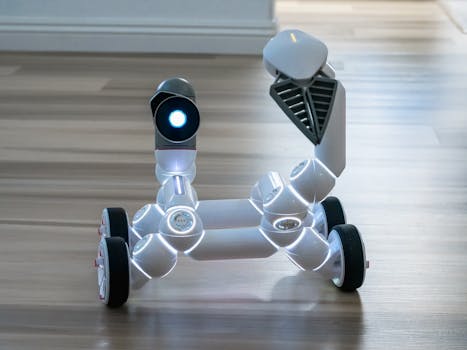
Smart Homes 2025: The Rise of Smart Homes 2025: The Rise of AI-Driven Devices
Smart Homes 2025: The Rise of AI-Driven Devices is transforming the way we live, work, and interact with our living spaces. With the integration of artificial intelligence (AI) and Internet of Things (IoT) technology, our homes are becoming more intelligent, efficient, and automated. In this article, we will explore the latest trends and innovations in smart home technology, and how AI-driven devices are changing the game.
Introduction to Smart Homes
A smart home is a residence that uses advanced technology to automate and control various aspects of the living space. This includes lighting, temperature, security, entertainment, and even household appliances. The primary goal of smart home technology is to make our lives easier, more convenient, and more enjoyable. With the rise of AI-driven devices, smart homes are becoming more sophisticated and intelligent, allowing us to interact with our living spaces in new and innovative ways.
AI-Driven Devices in Smart Homes
AI-driven devices are revolutionizing the smart home industry by providing advanced automation, voice control, and personalized experiences. Some of the most popular AI-driven devices in smart homes include:
- Virtual assistants like Amazon Alexa and Google Assistant
- Smart thermostats like Nest and Ecobee
- Smart lighting systems like Philips Hue and LIFX
- Smart security cameras like Ring and Nest Cam
- Smart speakers like Sonos and Bose
These devices use machine learning algorithms to learn our habits, preferences, and behaviors, and adjust their performance accordingly. For example, a smart thermostat can learn our temperature preferences and adjust the temperature automatically, while a smart lighting system can learn our daily routines and adjust the lighting levels accordingly.
Benefits of AI-Driven Devices in Smart Homes
The benefits of AI-driven devices in smart homes are numerous. Some of the most significant advantages include:
- Increased convenience and automation
- Improved energy efficiency and cost savings
- Enhanced security and safety
- Personalized experiences and entertainment
- Increased property value and appeal
AI-driven devices can also help us to save time and effort, by automating routine tasks and providing us with real-time feedback and updates. For example, a smart security camera can alert us to any suspicious activity, while a smart speaker can provide us with news updates, weather forecasts, and traffic information.
Challenges and Limitations of AI-Driven Devices in Smart Homes
While AI-driven devices in smart homes offer many benefits, there are also some challenges and limitations to consider. Some of the most significant concerns include:
- Privacy and security risks
- Compatibility and integration issues
- Cost and affordability
- Dependence on technology and infrastructure
- Environmental impact and sustainability
To address these challenges, it is essential to prioritize security, compatibility, and sustainability when designing and implementing AI-driven devices in smart homes. This includes using robust encryption methods, ensuring seamless integration with other devices, and designing devices with energy efficiency and recyclability in mind.
Conclusion
Smart Homes 2025: The Rise of AI-Driven Devices is transforming the way we live, work, and interact with our living spaces. With the integration of AI and IoT technology, our homes are becoming more intelligent, efficient, and automated. While there are challenges and limitations to consider, the benefits of AI-driven devices in smart homes are numerous, and the future of smart home technology looks bright. As we move forward, it is essential to prioritize security, compatibility, and sustainability, and to ensure that AI-driven devices are designed with the needs and preferences of users in mind.






